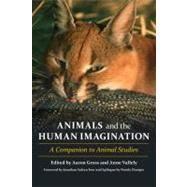Animals and the Human Imagination
, by Gross, Aaron; Vallely, Anne; Foer, Jonathan Safran; Doniger, Wendy (CON)- ISBN: 9780231152976 | 0231152973
- Cover: Paperback
- Copyright: 5/15/2012
Human beings have long imagined their subjectivity, ethics, and ancestry with and through animals, yet not until the mid-twentieth century did contemporary thought reflect critically on animals' significance in human self-conception. Thinkers such as French philosopher Jacques Derrida, South African novelist J. M. Coetzee, and American theorist Donna Haraway have initiated rigorous inquiries into the question of the animal, now blossoming in a number of directions. It is no longer strange to say that if animals did not exist, we would have to invent them. This interdisciplinary and cross-cultural collection reflects the growth of animal studies as an independent field and the rise of "animality" as a critical lens through which to analyze society and culture, on par with race and gender. Essays center on the role of animals in the human imagination and the imagination of the human, a discourse that has evolved in tandem with discussions of--and more robust concern for--animals in popular culture. They consider the worldviews of several indigenous peoples, animal-human mythology in early modern China, and political uses of the animal in postcolonial India. They engage with the theoretical underpinnings of the animal protection movement, representations of animals in children's literature, the depiction of animals in contemporary art, and the philosophical positioning of the animal from Aristotle to Heidegger. The strength of this companion lies in its timeliness and contextual diversity, which makes it essential reading for students and researchers while further developing the parameters of the discipline.






